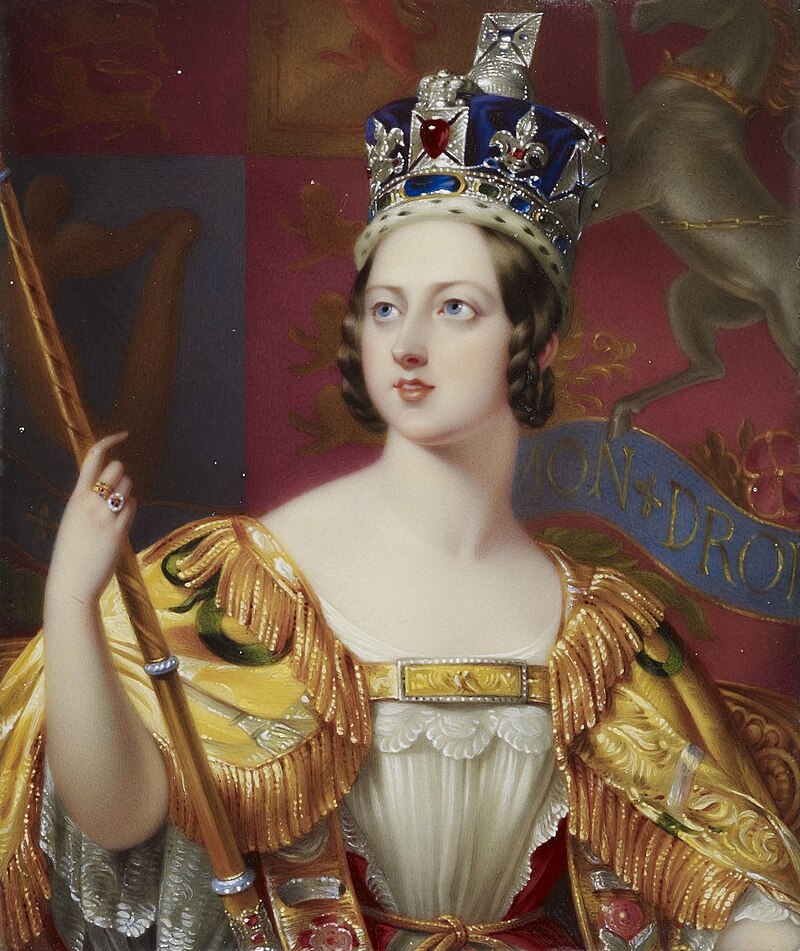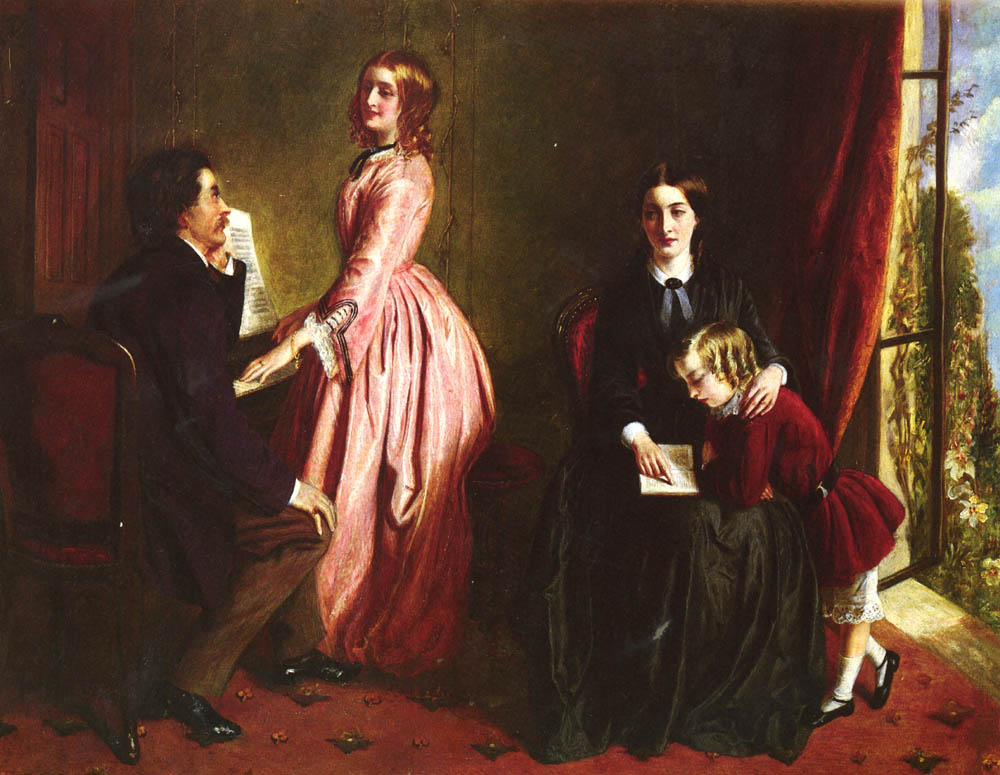 |
| The only known portrait of Walter Cecil Macfarren (Wikipedia) |
When we think of great musical composers in history, likely names such as Mozart, Beethoven, and Bach jump instantly to mind. And while it is unlikely that the name of our featured guest would spark any connection with these legendary greats, he does hold a special place in the hallowed halls of musical composition.
Walter Cecil Macfarren was born August 28, 1826 in London, the youngest son of dramatist George Macfarren, and the less-famous brother of musician George Alexander Macfarren. At the age of four he showed some musical promise, and by age ten he was serving as a choir-boy at Westminster Abbey. He sang at the coronation of Queen Victoria when he was 12, in 1838.
However, soon after, his voice changed as he entered puberty, and he briefly considered becoming an artist, even taking painting lessons. When that didn’t suit him, he worked as a salesman for pianos in Brighton.
Not finding that to his liking either, he entered the Royal Academy of Music in 1842, studying piano and composition. On his graduation, he remained on staff at the Academy, first as a sub-professor of the pianoforte, and eventually as a full professor. Macfarren served for 57 years, lecturing six times a year and teaching piano.
In 1852, at the age of 26, he married Julia Fanner, the daughter of an artist. The story goes that “her mind gave way” in 1878, which implies she suffered from some form of mental illness. She died in their 50th year of marriage. The couple had no children.
In 1862, he was appointed musical critic to The Queen newspaper, and later he edited Popular Classics and Mozart’s complete piano works and Beethoven’s sonatas.
During this time, his classical education inspired his composition of many small but solid piano pieces, always pleasing to the ear and stylistic, reminiscent of Mendelssohn. He also conducted concerts at the Academy, and served as treasurer of the Royal Philharmonic Society for three years, before turning his attention back to composition. In 1881, he wrote a concert piece for piano and orchestra, proving his ability and skill at writing for more than one instrument at a time. As if he wasn’t busy enough, he also released his Scale and Arpeggio Manual in 1862.
On his 70th birthday, Macfarren founded two prizes for pianoforte playing at the Academy. He retired in 1904 from all other work apart from remaining as a contributor to The Queen, and he published his autobiography in 1905, Memories. He lived his remaining days in Osnaburgh Terrace, London, usually spending his vacations at Brighton. He died later that year and is buried in St. Pancras and Islington Cemetery in East Finchley, London.
About Donna:
A hybrid author, Donna writes squeaky clean historical and contemporary suspense. She has been published more than 60 times in books; is a member of several writers' groups; facilitates a critique group; teaches writing classes; and judges in writing contests. She loves history and research, traveling extensively for both, and is an avid oil painter. She is taking all the information she’s learned along the way about the writing and publishing process, and is coaching committed writers eager to tell their story.
www.DonnaSchlachter.com
Newsletter: https://www.thepurposefullwriter.com/newslettersignup Stay connected so you learn about new releases, preorders, and presales, as well as check out featured authors, book reviews, and a little corner of peace. Plus: Receive 2 free ebooks simply for signing up for our free newsletter!
Facebook: www.Facebook.com/DonnaschlachterAuthor
Amazon Author Page: https://www.amazon.com/stores/Donna-Schlachter/author/B01180A2EE
Bookbub: https://www.bookbub.com/authors/donna-schlachter
Goodreads: https://www.goodreads.com/search?q=donna+schlachter
The Purpose-Full Writer: https://www.facebook.com/groups/604220861766651
Need a writing coach? www.ThePurposeFullWriter.com
Sources:
https://en.wikipedia.org/wiki/Walter_Cecil_Macfarren
https://www.cpdl.org/wiki/index.php/Walter_Cecil_Macfarren Includes a list of his works
https://en.wikisource.org/wiki/Dictionary_of_National_Biography,_1912_supplement/Macfarren,_Walter_Cecil Includes more about his earlier life






























